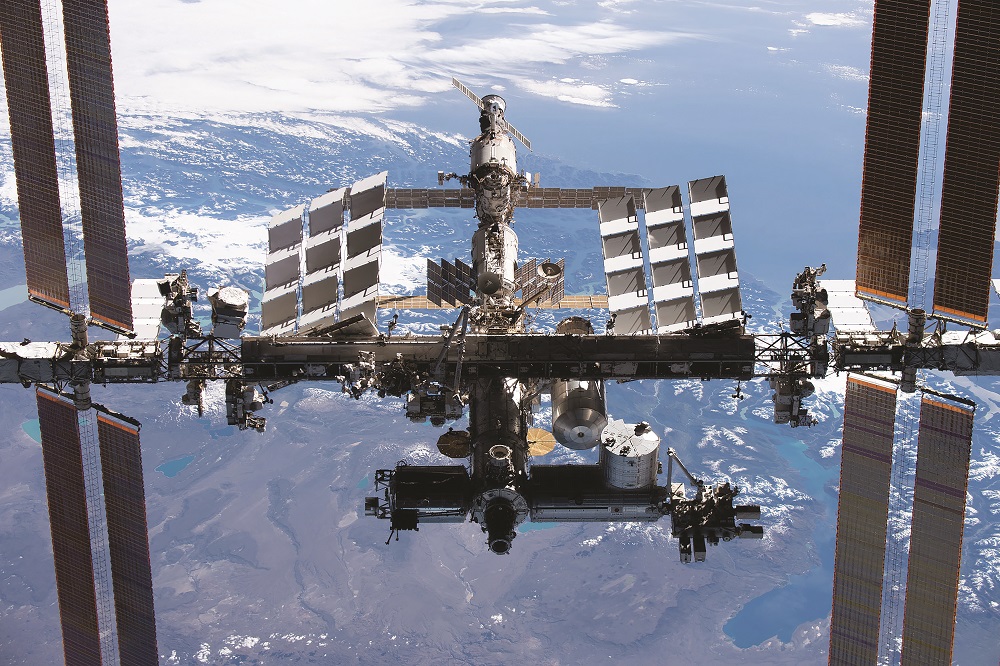Technology advances and novel businesses are opening up new ways to qualify materials in space. To avoid jeopardizing mission success, manufacturers rigorously test and validate novel materials before using their potentially performance-improving capabilities on customer satellites.
While the International Space Station has become an important tool for experimenting with materials in low Earth orbit, companies are hungry for more accessible and cheaper alternatives to keep pace with rapid evolution in the satellite market.
Enter British startup Space Dots, which raised around $1.5 million last summer to develop a smartphone-sized kit called Barnacle Dot that could be mounted internally or externally on a partner satellite for testing a material’s mechanical, thermal, and electrical properties.
A miniaturized tensile tester that is a key technology needed for Barnacle Dot was recently deemed to be at European Space Agency Technology Readiness Level (TRL) 3, the proof of concept stage, following tests reviewed by undisclosed industry space primes.
The technology leverages an advanced material that Space Dots is keeping under wraps, said cofounder James Sheppard-Alden, a former Airbus spacecraft engineer specializing in additive layer manufacturing. He said the patent-pending tensile tester creates a “very understood and measurable force” with “essentially no moving parts” to break open material samples once in orbit and then send raw stress-strain data back to the customer.
“It’s like squeezing the power of a large ground-based tensile tester, which is as big as a washing machine, into just a couple of centimeters,” said Bianca Cefalo, a former thermal product manager at Airbus who also co-founded Space Dots in January 2021.
Commercial space station firm Nanoracks, which already has experience supporting materials research on the ISS, is one of the startup’s partners.
Currently, the industry uses huge Instron machines to test strength and fatigue and “there is no real practical way to put these machines in space,” Nanoracks chief innovation officer Michael Lewis said.
“We do have the option of returning materials to Earth for testing purposes, but there are other considerations, like taking up downmass and a limited number of return opportunities, that prevent us from getting the high sample sizes we need to build trust in our data sets,” he said.
The vision is for Barnacle Dot to be a tiny autonomous space laboratory that only uses a host spacecraft for power, data transmission, and temperature control.
Barnacle Dot’s small size would also make it compatible with re-entry hosting platforms, in case customers need their material returned for further study, in addition to commercial satellites and science missions with spare mass.
Growing space qualification market
Nanoracks has supported materials research in space with its Nanoracks External Platform (NREP), mounted on the outside of the ISS for providing communication, power, and operations to hosted payloads.
Aegis Aerospace also offers material testing capabilities with sampler trays mounted outside the ISS, which, unlike Barnacle Dot, is restricted to operating in LEO.
Mark Gittleman, Aegis Aerospace’s chief strategy officer, said its customer experiments have ranged from passive material experimentation to testing complex electronics and sensors.
In addition to returning samples to customers, the company offers real-time data collection, near real-time data downlink, and onboard high-resolution imagery.
Aegis Aerospace has conducted nine missions over the past five years, Gittleman added, each about six months long. It has also launched and returned around 2,000 experiments and material samples to date.
Additive manufacturing is one area set to benefit greatly from advances in on-orbit testing, according to Nanorack’s Lewis, and will be important for building replacement components in space, recycling materials such as packaging waste, and building structures that cannot exist in the presence of gravity.
“To build trust in these materials, we need a way to perform testing of the materials and the components made out of them,” he said.
“Being able to provide real-time data from the materials that are made in orbit means we can know the strength of the components, and thus we can trust that they will work.”
Improving materials testing would also help make small satellites more reliable, Cefalo said, pointing to NASA estimates of a 41% failure rate for those launched between 2000 and 2016.
Space Dots is preparing to offer ground-based material testing services by late next year, ahead of launching its first space mission in 2025.
This article originally appeared in the November 2023 issue of SpaceNews magazine.
Related
Read the original article here
